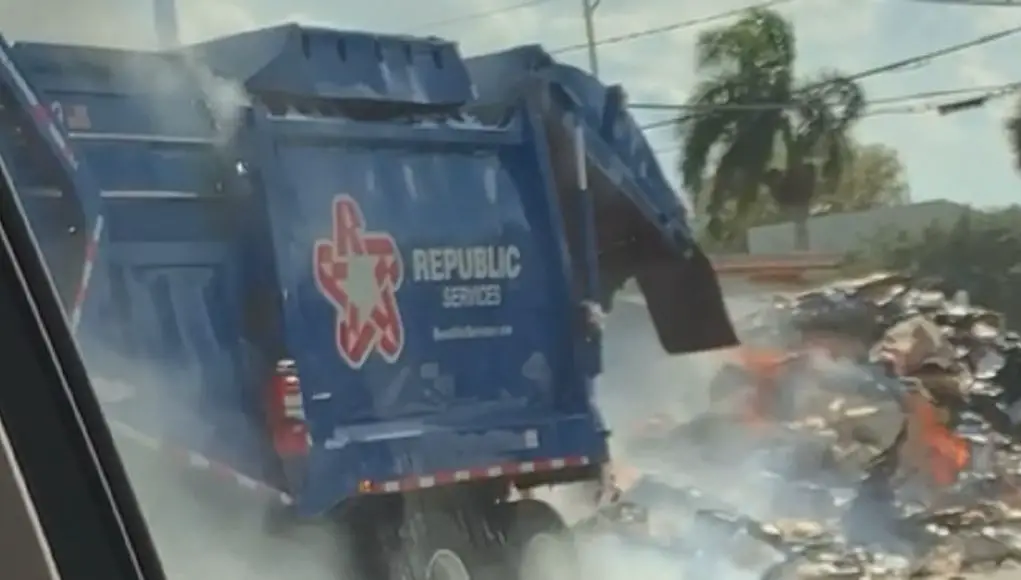Not dumping hot garbage ASAP might lead to an even bigger, more catastrophic problem.
Scrolling Reddit earlier yesterday and I came across an interesting video of a garbage truck whose load unfortunately caught fire.
With how ubiquitous lithium-ion battery-powered devices have become, this is unfortunately a growing trend.
In fact, a search brings up several stories of garbage trucks on fire dumping their hot loads (get your mind out of the gutter) as of late.
What gives? Why do garbage truck drivers opt to dump their flaming garbage instead of keeping the burning garbage contained?
Thankfully, an actual, former refuse mechanic gave several good reasons why garbage truck drivers do this.
Here’s the shocking video below.
Before I go over what the mechanic said, the easiest answer comes from “The Press Enterprise” report on the matter.
According to Kirk Sander, Chief of Staff for the National Waste and Recycling Assc in Washington, DC, “The protocol is to dump the load to save the truck.”
That’s mostly it, honestly. Drivers dump hot garbage because it’s protocol and damage control. New garbage trucks cost upwards of $300,000 and losing a truck is just not good business.
The protocol also outlines safety measures, mainly keeping the public from approaching a flaming pile of garbage.
But according to the refuse mechanic, it’s common sense to drop flaming garbage quickly because a lot of these garbage trucks run on CNG (compressed natural gas.)
“…more than 17,000 refuse and recycling trucks in the United States run on Natural Gas,” says a report from Waste Dive citing figures from NGV America.
“That truck is running a 9L Cummins ISL engine that uses compressed natural gas, the mechanic comments. “Above the body of the truck in that smashed up rectangular box are 4 or 5 CNG fuel tanks that hold 3600 psi of CNG.”
“Having a “hot load” where the contents inside the body are on fire is an extremely dangerous situation. You can try to override the blade travel position and crush the load as much as possible to snuff the fire out. Sometimes it works, sometimes it doesn’t.”
“The next course of action is to dump the load and get away from it. There is no onboard fire suppression system outside that fire extinguisher you see on the side of the truck.“
“Yeah, it makes a huge mess that’s expensive to clean up, but it’s a lot safer than turning the truck in to a bomb.”
And even if a garbage truck isn’t CNG, the same principles can arguably apply to gas or diesel garbage trucks.
Regular diesel or gas-powered garbage trucks all have fuel cells hanging off the side with about 50 gallons (or more) of highly flammable fuel.
With a garbage fire, it’s only a matter of time before the fire breaches the main trash compartment, the hot flames engulfing an exposed fuel cell.
So, those are the main reasons, not only is it protocol to save the equipment, it’s just common sense to not turn your garbage truck into a potential garbage bomb that can wreak more havoc than a flaming trash pile alone.



